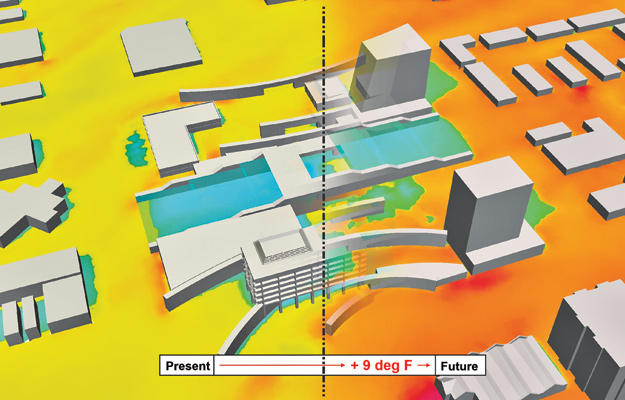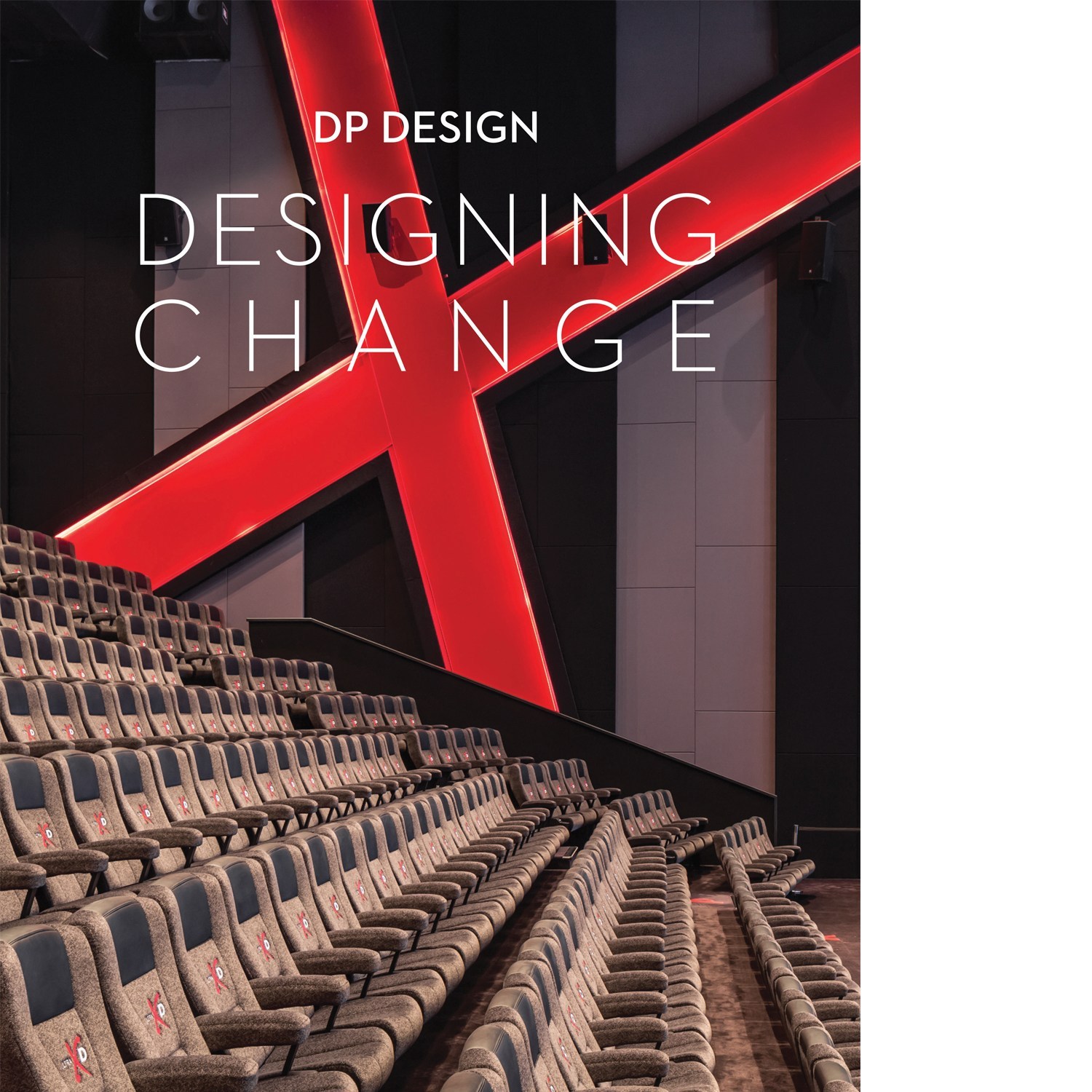Architects and engineers must consider a building site's climate to create structures that efficiently keep occupants comfortable. There are, however, basic deficiencies in the weather data that they commonly plug into energy simulations. Some new tools are addressing this data gap—tools that could help buildings to perform as anticipated and gracefully adapt to a changing climate.
A tool expected to be released later this year by the American Society of Heating, Refrigerating and Air-Conditioning Engineers (ASHRAE) targets weather data's geographic limits. ASHRAE publishes standard design-year data sets for use in energy modeling. These represent natural variation in temperature, sunshine, and other meteorological conditions observed at weather stations. Most are at airports, where conditions can vary significantly from those found in urban centers just a few miles away. Dru Crawley, building-performance director for design software vendor Bentley Systems and chair of ASHRAE's technical committee for climatic data, says urban heat island effects elevate downtown temperatures 2 to 9 degrees Fahrenheit. As a result, says Crawley, a data set from the closest weather station may “mean absolutely nothing when you get to a particular building site.”
His committee's solution: rewrite history. They commissioned a tool from Guelph, Ontario–based Novus Environmental to generate weather data for virtually any 6-square-mile block of territory in the continental U.S. The software uses a weather model, informed by topography and land-use data and calibrated by historic observations, to capture each block's local microclimate.
Another thrust of technology development targets historical data sets' inevitably backward vision—a growing liability in an era of global climate change. International engineering firm Arup collaborated with climate-data startup Argos Analytics to develop WeatherSHIFT, which Arup uses internally to predict future design-year data sets. Mathematical methods known as morphing superimpose changes predicted by climate modelers on observed weather data.
U.K.-based Arup climate expert Jacob Hacker and academic colleagues pioneered morphing a decade ago, using a climate model to produce future data sets for U.K. weather station sites in 2020, 2050, and 2080. ASHRAE's London-based sister organization, the Chartered Institution of Building Services Engineers (CIBSE), has distributed the morphed data sets and encouraged their use in U.K. projects.
Arup's Hacker and Cole Roberts, a San Francisco–based Arup principal, say WeatherSHIFT offers better morphing algorithms, relies on the latest climate models, can morph data sets from sites worldwide, and shows designers a broad range of climate-adjusted weather under different carbon-emissions scenarios.
An innovation from U.K. academics, meanwhile, is offering designers both climate perspective and the site-specificity expected from ASHRAE's software. The Prometheus tool created by Matthew Eames, a research fellow at the University of Exeter's Centre for Energy and the Environment, relies on an artificial weather generator to synthesize both historic and future weather data sets for every location in the U.K.
Eames says U.K. architects and engineers using future-weather data sets are already gaining broad insights about what climate change means for their designs—especially the present and growing threat of overheating in certain structures. The European heat wave of 2003 was considered a 1-in-1,000-year event, says Eames, but the design data sets show that such temperatures could be typical summer conditions by the 2040s.
Forecast data sets enable designers to think ahead. For example, they can oversize mechanical rooms to accommodate a future need for more equipment. “You don't build your building to cope with 2080 now. It's about making sure your building can adapt,” says Eames.
Arup's Roberts says North American designers and clients are a step behind the U.K.'s, but he sees interest growing. He describes an eye-opening climate risk assessment that Arup recently completed for a client with a large real-estate portfolio in California. WeatherSHIFT predicted a 7-degree-Fahrenheit rise in average summer temperatures at the end of the century, which energy modeling showed would challenge naturally ventilated buildings. Often viewed as more resilient since they eschew mechanical systems, naturally ventilated buildings are also the most closely designed for the historical climate, explains Roberts. “As climate shifts even a few degrees, those buildings will suffer more,” he says.
Roberts's hope is that anticipating future weather will become “a default for how work is being done on every project globally.” He proposes one way to entice clients to buy in: convincing LEED and other green building-rating systems to award points for testing designs against predicted weather. He is also looking for partners to help make WeatherSHIFT available beyond Arup.




Post a comment to this article
Report Abusive Comment